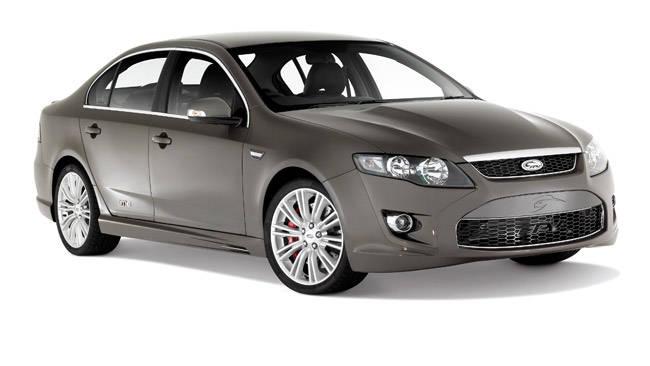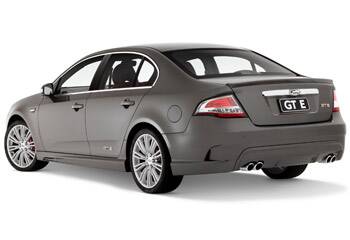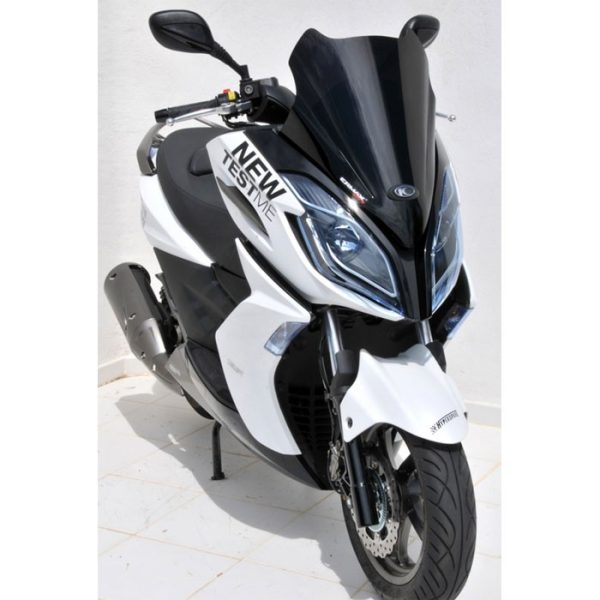
FPV GT-E 2012 Review
The road runner would be a road killer if Wile Coyote could get his hands on a supercharged V8 from Ford Performance Vehicles.
The engine is known locally as the Miami, but is a modified version of the 5.0-liter Coyote powertrain found in the US Ford Mustang. At first glance, the top-of-the-line GT-E looks too tame — even with that deep honeycomb grille on the front bumper — to be a tire-chasing machine.
This impression changes as soon as you step on the straight with your right foot and unleash 335 kW/570 Nm. Only cars with rather exotic badges and prices north of $100,000 will keep up. Not bad for a boosted Falcon - and definitely capable of confusing a cartoon character.
COST
The biggest problem with the $82,990 GT-E is that it still feels like a $47,000 Falcon G6E. The FPV team outfits this executive express with leather upholstery, a rearview camera, wood accents, and a decent audio system, but plastic panels, buttons, and dials can be found in taxis all over the country.
None of that matters when you're behind the wheel enjoying sound and speed that no other Falcon can match. Buyers on a budget should look out for the $76,940 F6E, which is the same car powered by a 310kW/565Nm six-cylinder turbo. It's a little slower off-trail, but the lighter engine helps the front wheels change direction faster in corners.
TECHNOLOGY
Forced induction is the path followed by all automakers. FPV supports both camps: the supercharged V8 uses the engine's mechanical energy to compress air, while the turbocharger on the F6E is driven by the exhaust gases.
The new eight-inch touchscreen has standard Suna sat-nav with real-time traffic updates and, oddly enough, a "green routing" mode that calculates the most economical route. As FPV owners care, quad bike exhaust fumes after a decent run will probably power a lightweight machine.
Styling
Yes, it's a Falcon, inside and out. That's not bad considering the GT-E and F6E are a more understated styling duo, and FPV is stable and the best fleet choice for it. It's hard not to notice the six-piston Brembo lurking behind the 19-inch wheels, but the rest of the body kit is - by muscle car standards - subdued. The leather seats look and feel nice, and the grip helps hide the fact that the seat isn't reinforced enough to handle the lateral forces this car can generate.
SECURITY
FPV only enhanced Ford's five-star performance with the Falcon. The brakes are really impressive, despite the slightly woody pedal, and the car feels much more confident than a regular Falcon. The usual security software comes into play if something goes wrong, and there are six airbags if all else fails.
 DRIVING
DRIVING
Forty years ago, the only people who didn't want a productive Ford were those who barracked Holden. Since then, Europeans have come out with a series of lighter, faster cars that use less fuel, and homegrown cars have gotten beaten up. The GT-E proves that this is not necessarily the case.
The Harrop-designed supercharger creates a tidal wave of grunts, so in terms of sheer speed, it's not far off the Mercedes C63 AMG. And FPV costs half as much. The weight on the front means it feels better in tight corners than hairpins, and the suspension is a reasonable compromise between absorbing bumps and keeping the car level. Wider tires would have improved traction, but that's the only complaint.
VERDICT
Choosing an FPV litter can hold its own against a much more expensive opponent. Buying from a local puts a car with amazing performance and room for five in the garage. This is the better of the two scenarios for car enthusiasts who still have to lug friends or family around.
FPV GT-E
Cost: $82,990
Guarantee: Three years/100,000 km
Resale: 76%
Service Intervals: 12 months/15,000 km
Safety: ABS with BA and EBD, ESC, TC, six airbags
Accident Rating: Five stars
Engine: 335 liter supercharged V570 engine with 5.0 kW/8 Nm
Transmission: Six-speed automatic, rear-wheel drive
Body: four-door sedan
Dimensions: 4956 mm (L), 1868 mm (W), 1466 mm (H), 2836 mm (W), tracks 1586/1616 mm front/rear
The weight: 1870kg
Thirst: 13.7 l/100 km (95 octane), g/km CO2

